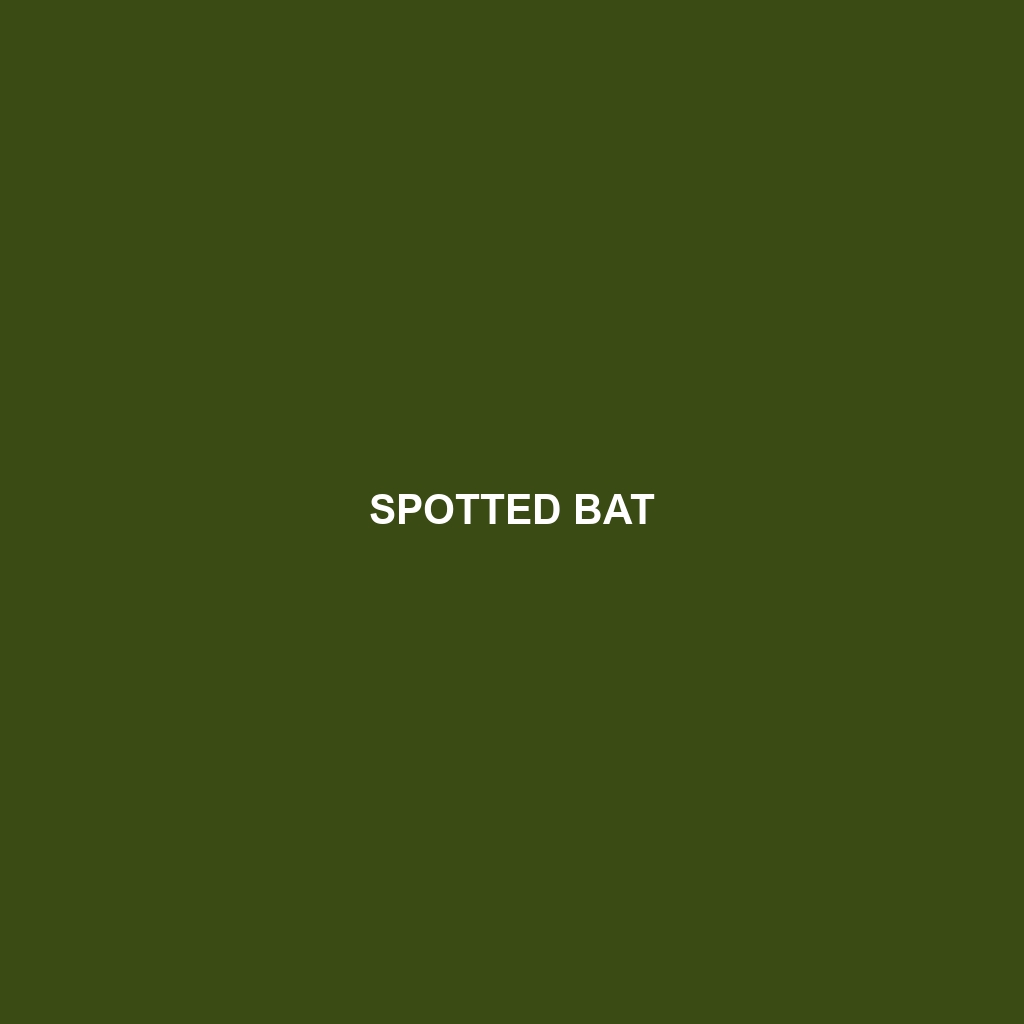Spotted Bat (Scientific Name: Lasionycteris noctivagans)
Common Name: Spotted Bat
Scientific Name: Lasionycteris noctivagans
Habitat
The Spotted Bat is primarily found in the North American region, particularly in the western United States and parts of Mexico. Its preferred habitat includes arid desert landscapes, rocky canyons, and open woodlands, where it roosts in rock crevices, caves, and occasionally in tree hollows. This species thrives in areas with abundant insect populations, as these provide ample feeding opportunities.
Physical Characteristics
The Spotted Bat is a medium-sized bat, typically measuring between 4.6 to 5.5 inches in length with a wingspan of approximately 13.4 inches. Its most distinctive feature is its large, prominent ears that can be up to 2.1 inches long, which aid in echolocation. The fur is primarily dark brown or black, with notable white spots on its back and white underparts. These unique markings help in identifying the species and play a role in camouflage.
Behavior
Spotted Bats exhibit nocturnal behavior, using echolocation to navigate and hunt for insects during the night. They are known for their agile flight, often swooping to capture insects mid-air. This bat species is also seen roosting alone or in small groups, typically during the day, in locations that provide shelter from predators and environmental elements. Their social behaviors include vocalizations that can help in communication between individuals.
Diet
The diet of the Spotted Bat primarily consists of moths, beetles, and other flying insects. They are known to forage at various heights, from low to high altitudes, often capturing prey over open areas. Their foraging habits make them crucial in controlling insect populations, which benefits the agricultural ecosystem.
Reproduction
Spotted Bats breed in the summer months, typically from June to August. Female Spotted Bats give birth to a single pup, usually in late June, after a gestation period of about 2 months. Maternal care is exhibited by females, who nurse their young until they are independent, often teaching them essential foraging skills during this time.
Conservation Status
The Spotted Bat is currently listed as vulnerable due to habitat loss, climate change, and decline in insect populations. Efforts are being made to monitor their populations and protect their habitats to ensure their survival in the wild.
Interesting Facts
One fascinating fact about the Spotted Bat is its exceptional hearing capability, which allows it to detect the faintest sounds in the dark, aiding in hunting and navigation. Additionally, they have the ability to fold their wings back tightly against their bodies, a feature that can aid in camouflage during rest periods.
Role in Ecosystem
The Spotted Bat plays a vital role in its ecosystem as a predator of nocturnal insects, contributing to natural pest control. By maintaining insect populations, it indirectly supports agricultural health and biodiversity. Their presence in the ecosystem also reflects the overall health of the environments they inhabit, making them important indicators for ecological studies.
